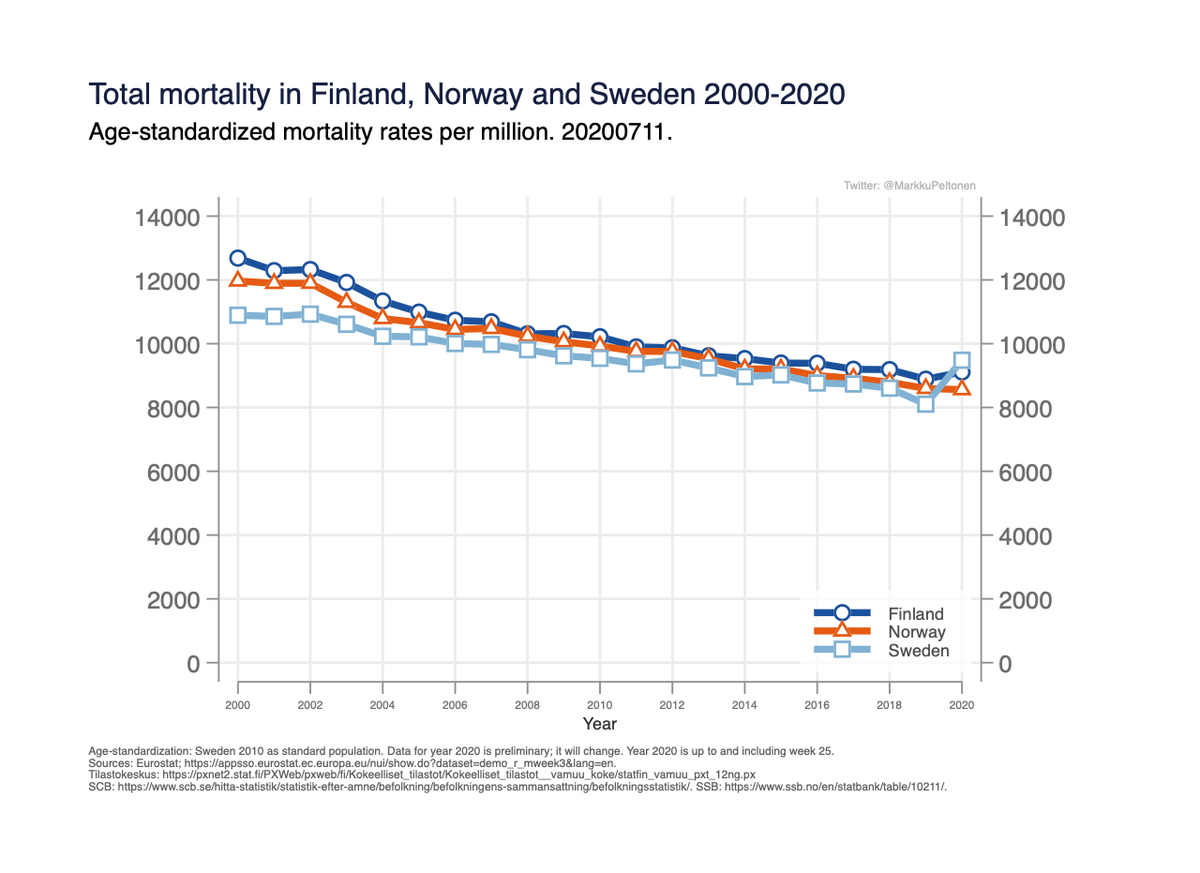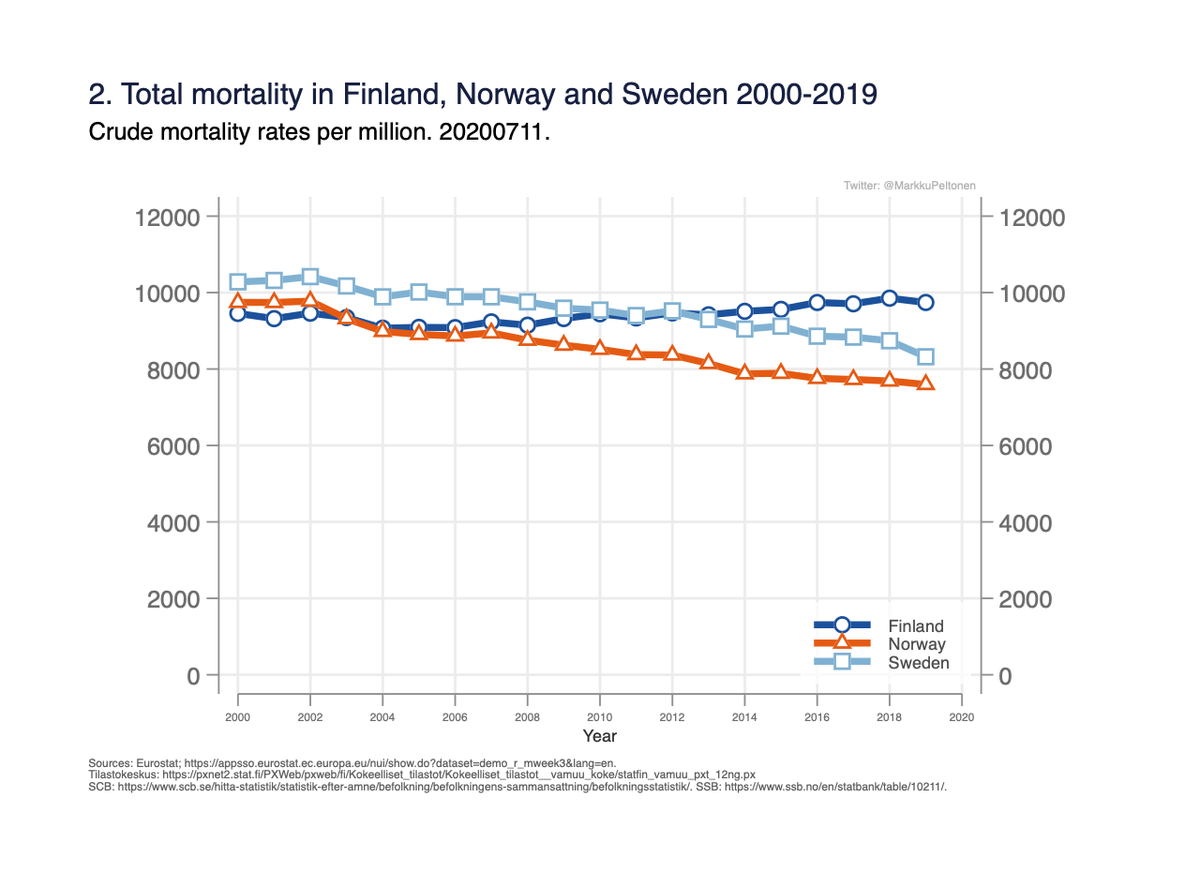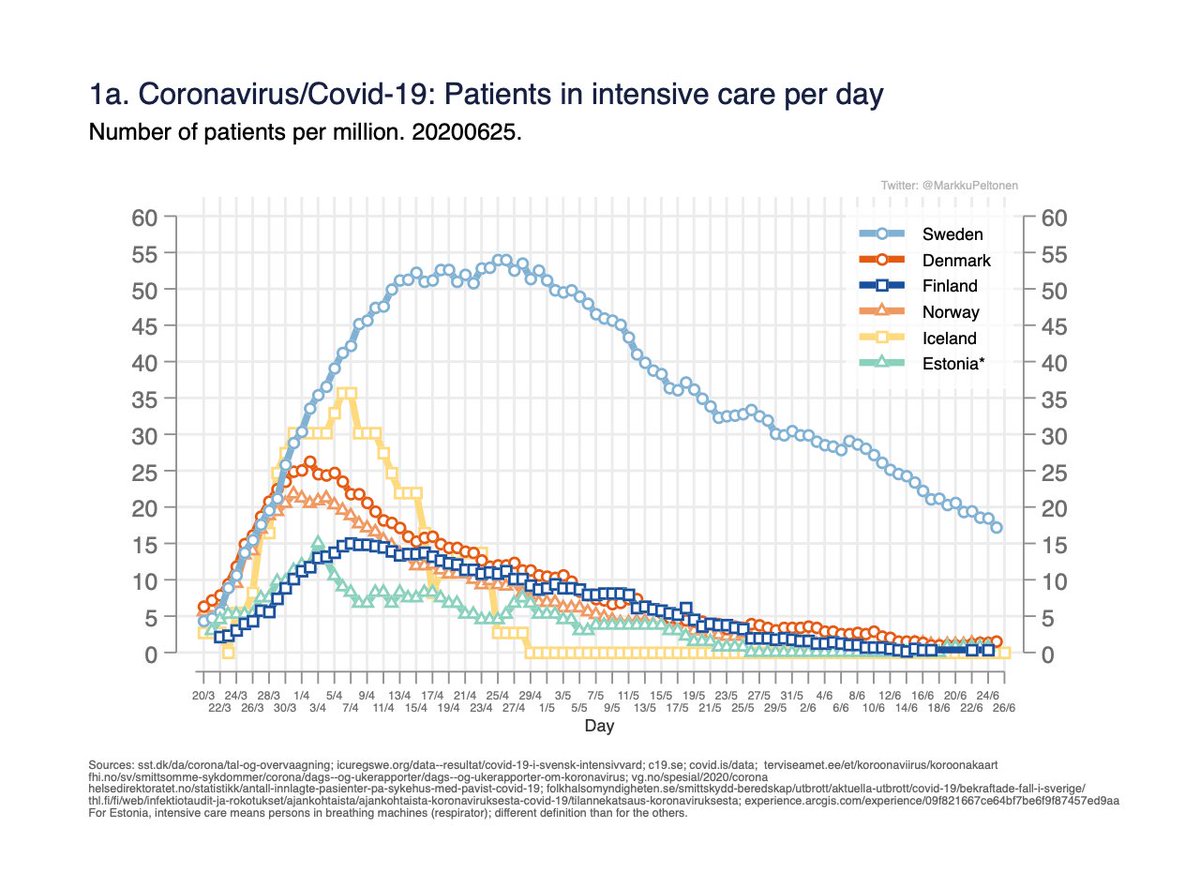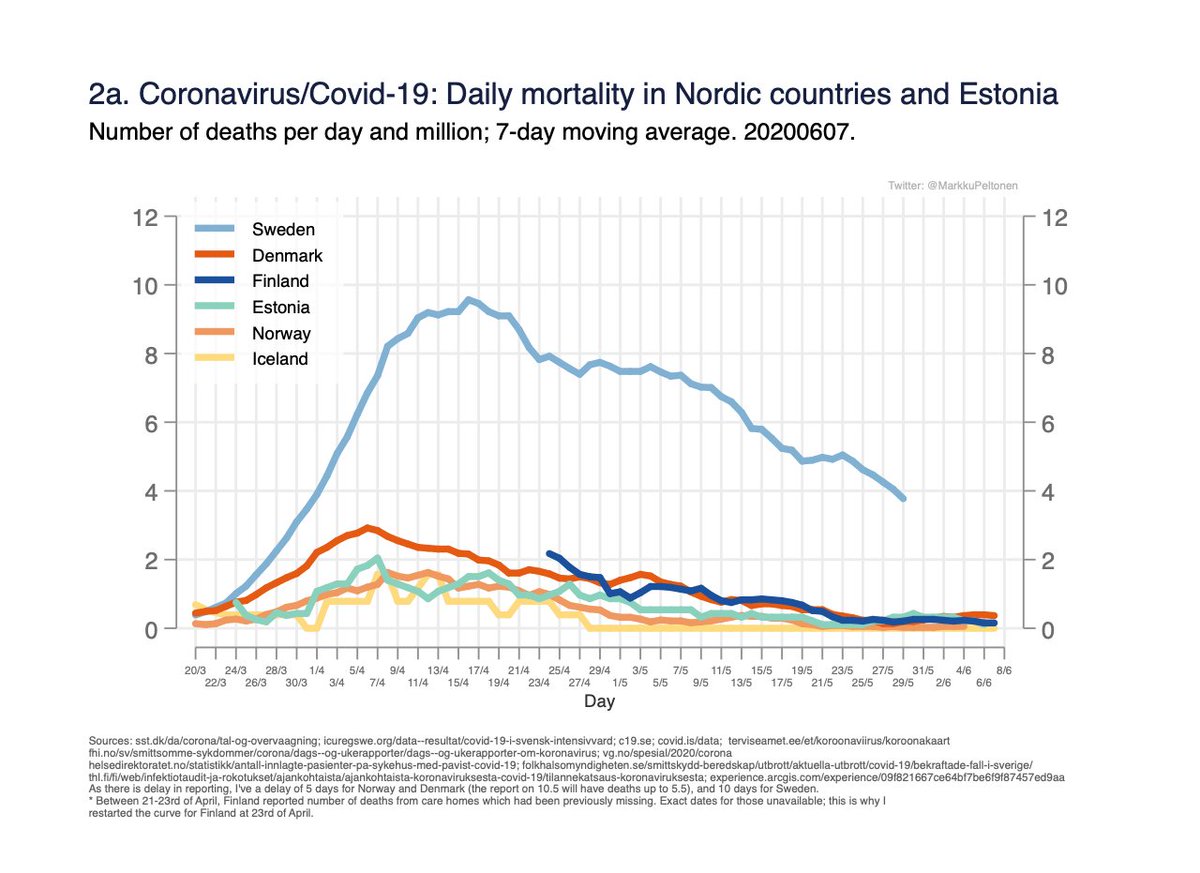But, this year so far they have lost this advantage. 2/7
Can't be seen in yearly rates on total mortality (as here), need to analyse ”life-years lost". 4/7
But is it really? No. Such a comparison neglects all the considerable improvements in public health in the past, which have contributed to increased life-expectancy.
5/7
(For the technically interested, I will illustrate why misleading here below; long thread). 6/7
A bit technical; might not be very interesting for the most, hopefully for some! 8x/
This rate is also called “crude rate” in epidemiology, as it only takes into account the population sizes over years, nothing else. x12/
But, Finland has more excess than Sweden already in 2018 when compared to 2000. Does this tell us anything?
No. We will see why not. x13/
- Norway has lowest rate and decreasing.
- Sweden had highest, but has decreased.
- Finland has actually a slight increase.
Why these differences?
x14/
Median ages 1990 -> 2015:
- Finland 36.4 -> 42.5
- Sweden 38.4 -> 40.9
- Norway 35.4 -> 39.2
x15/
(ourworldindata.org/age-structure)
Sweden used to be oldest, but ageing has been slower than in Finland/Norway.
Finland now oldest, ageing has been more rapid. x16/
- differences/changes in public health (mortality due to disease burden, lifestyle eg smoking, etc)
- fertility (number of children per woman)
- immigration (I assume immigrants on average younger than general population).
x17/
So we are not getting as many young into the population as the others.
Immigration is more common in Sweden, also Norway more than twice as many foreign-borns. x18/
ourworldindata.org/fertility-rate:
Need data on pop. size in all age groups and all years, as well as nr of deaths in all age groups for all the years. x19/
Calculation is quite simple, see for example (or google “direct standardisation”): x20/
healthknowledge.org.uk/e-learning/epi…
The rates have been declining everywhere, Fig 3. x21/
Next step could be check common diseases, lifestyle factors associated w mortality (smoking, obesity etc) in the countries. (Will not go there.) x22/
Finland: 81.7 years
Norway: 82.3
Sweden: 82.7
x23/
(In fact the “age-standardised rates” here are also standardised for diffs. in nr of men and women in different countries/years). x24/
- Sweden has lowest mortality rates but this year so far lost this advantage.
- In comparisons to long term historical levels, one has to consider changes in population demographics.
- Comparing to historical levels neglects improvements in public health.
x26/x26





























